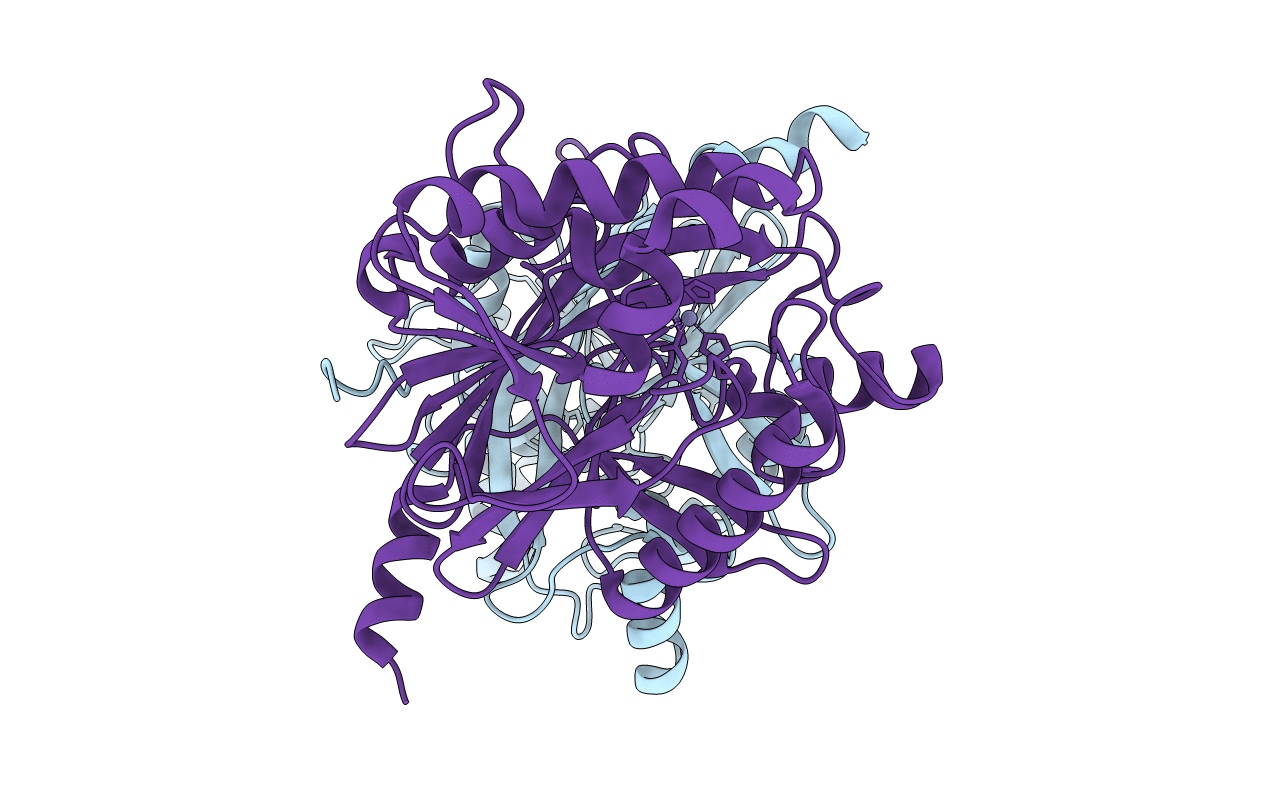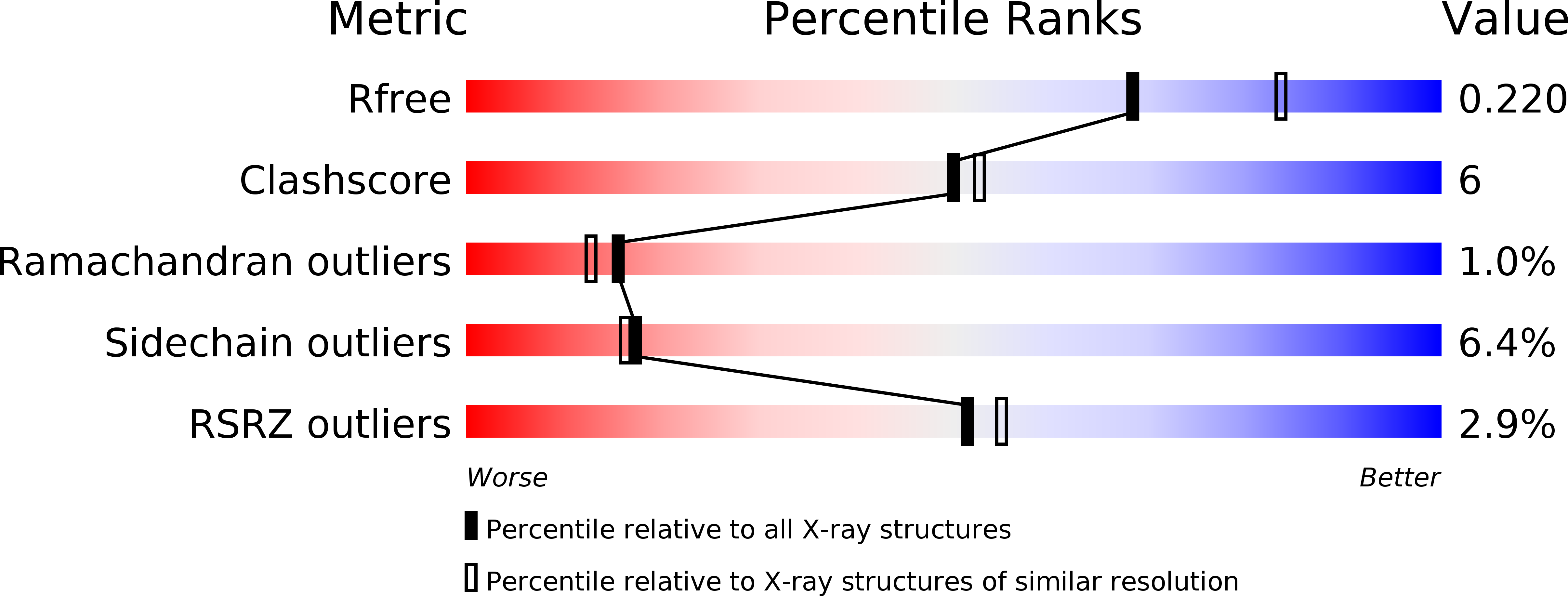
Deposition Date
2014-01-02
Release Date
2014-12-03
Last Version Date
2024-10-30
Entry Detail
PDB ID:
4O98
Keywords:
Title:
Crystal structure of Pseudomonas oleovorans PoOPH mutant H250I/I263W
Biological Source:
Source Organism:
Pseudomonas oleovorans (Taxon ID: 301)
Host Organism:
Method Details:
Experimental Method:
Resolution:
2.25 Å
R-Value Free:
0.21
R-Value Work:
0.17
R-Value Observed:
0.17
Space Group:
P 61


